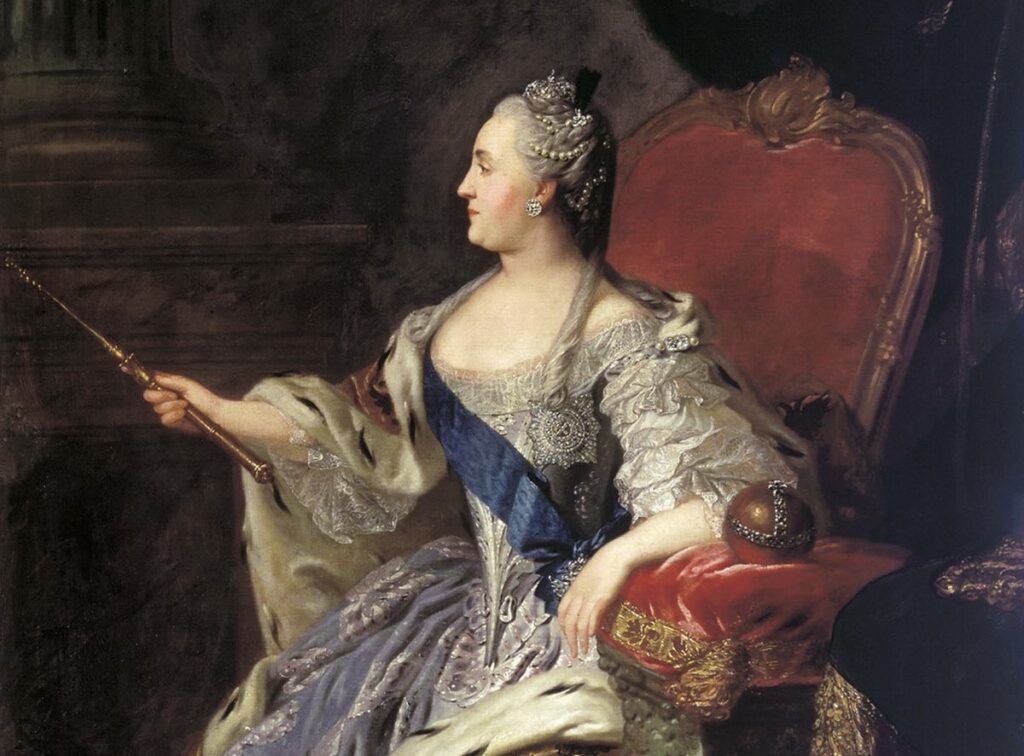In the summer of 1762, the Russian Empire changed hands without a single sword being drawn in battle. There were no cannons, no barricades, just a few clever moves, a tearful performance for the public, and one of history’s most daring power plays.
You might be surprised to learn that the star of this drama is not a born princess of Russia; she is not even Russian by blood. She was a German-born bride in a failing marriage who had no official claim to the throne.
Her name was Catherine, and she would go down in history as Catherine the Great, one of the most famous female rulers in Russian history.
Catherine’s rise was not a fairy tale; she didn’t waltz her way to the throne and claim the crown. It was a slow, long, and patient climb that was built on secret alliances, calculated charm, and one very awkward husband named Peter III. In the end, it all came together in a cold coup, a takeover that was so bloodless it felt almost polite… that is, if you ignore the small matter of royal betrayal.
Let’s rewind.
The Princess Who Wasn’t Supposed to Rule
Catherine was not born as “Catherine.” She was born Sophie Friederike Auguste von Anhalt-Zerbst in 1729. She was born in a small German principality that barely appeared on most maps, and although her family was noble, they weren’t exactly wealthy or powerful.
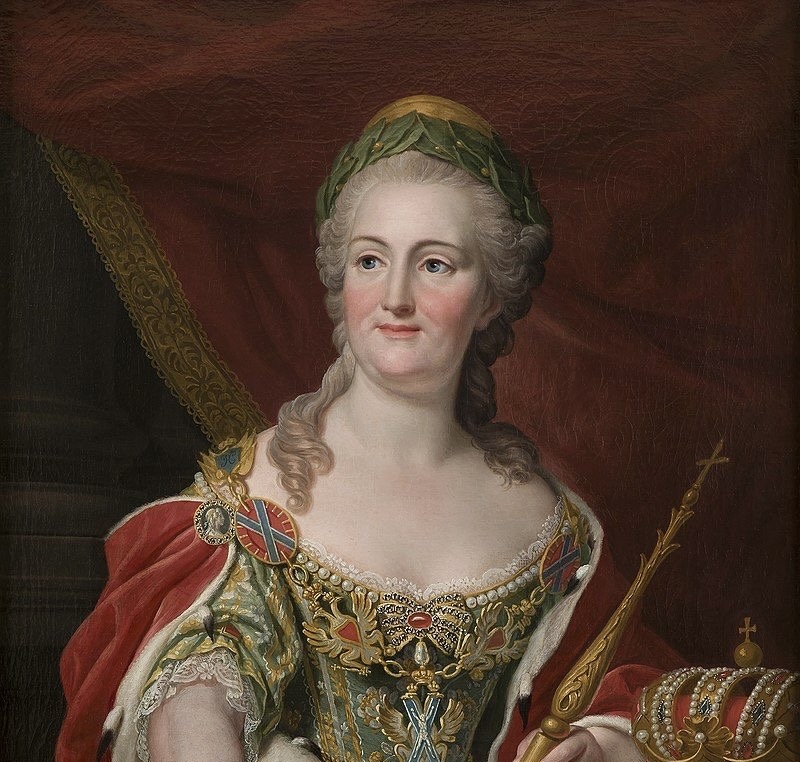
When Sophie was just 14 years old, her life changed with an invitation she got from Russia. Russia wanted her as a bride for the young heir to the throne, Peter of Holstein-Gottorp, the future Peter III. It was an opportunity for her family, and Sophie’s mother pushed hard for it.
She learned the Russian language, converted to the Russian Orthodox faith, and took a new name.
Sophie’s trip to Russia was not a glamorous royal cruise. She had to charm Empress Elizabeth, the reigning ruler at the time, who was also Peter’s aunt. She learned the Russian language, converted to the Russian Orthodox faith, and took a new name, Catherine Alekseyevna.
And the fairytale marriage she might have dreamed of… it didn’t happen.
Peter III: A Husband Who Wasn’t Exactly “Tsar Material“
Peter III was… a strange man. History painted him as immature. He was described as being obsessed with Prussian military drills and was very unpopular with the Russian court. He also admired Frederick the Great of Prussia, which was a big problem since Prussia was one of Russia’s rivals.
Catherine and Peter’s marriage was rocky from the very beginning. He neglected her, humiliated her in public, and may have been incapable of producing heirs without help (yes, there was gossip about their private life, and it was rampant).
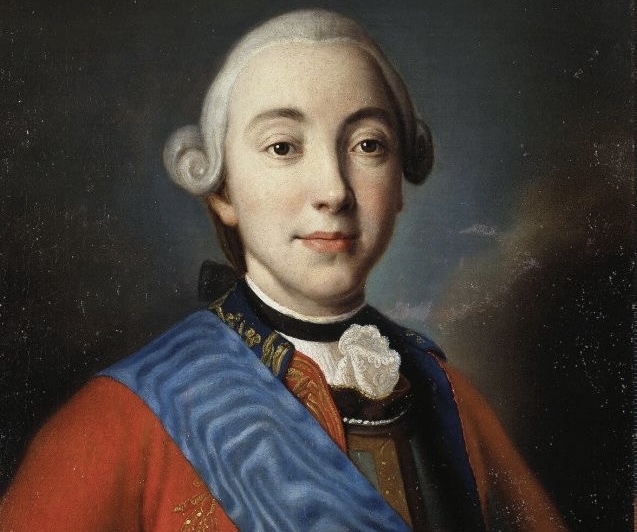
You would think all of this would bring Catherine down, but no. Instead of sulking, Catherine did what future empresses apparently do; she adapted. She began with Russian politics, befriended powerful military leaders, and quietly established our own network of allies. This woman played the role of a dutiful wife in public, but in private, she was preparing for something much bigger.
Russia in 1762: A Kingdom That Was Ripe for Change
When Empress Elizabeth died in January 1762, Peter III became tsar, and he immediately started making enemies.
The biggest mistake he made was attempting to reform the army in ways that angered Russia’s elite guards. They were not just soldiers; they were kingmakers. These Imperial Guards could make or break a ruler, but Peter treated them like they didn’t matter.
They were going to remove Peter, install Catherine, and keep Russia from falling into chaos.
Peter III also withdrew Russia from a war against Prussia, and the move infuriated his generals. He then made matters worse by announcing policies that favored foreigners over Russians. In a deep nationalistic empire, what he did was political suicide.
Within just six months, many people in the Russian court were wondering: Could Catherine do better?
The Straw That Broke the Camel’s Back: Peter’s Carelessness
Peter was not only unpopular but also careless. He openly talked about divorcing Catherine. Some sources even suggest that he planned to marry his mistress, Elizaveta Vorontsova. If he had followed through with the divorce or the marriage to his mistress, Catherine would have been exiled to a convent, and she wasn’t going to let that happen.
By the time people started getting wind of the divorce talks, Catherine already had the loyalty of key military leaders, including the influential Orlov brothers, who commanded units in the Imperial Guard. They didn’t just like her; they believed she would be a stronger, more stable ruler than Peter.
Catherine and her supporters began to develop a plan, and eventually, it started to take shape. They were going to remove Peter, install Catherine, and keep Russia from falling into chaos.
The Coup That Happened Overnight
The coup was almost shockingly swift. On July 9, 1762, Catherine learned that Peter might soon act against her, and she knew she had to make the first move.
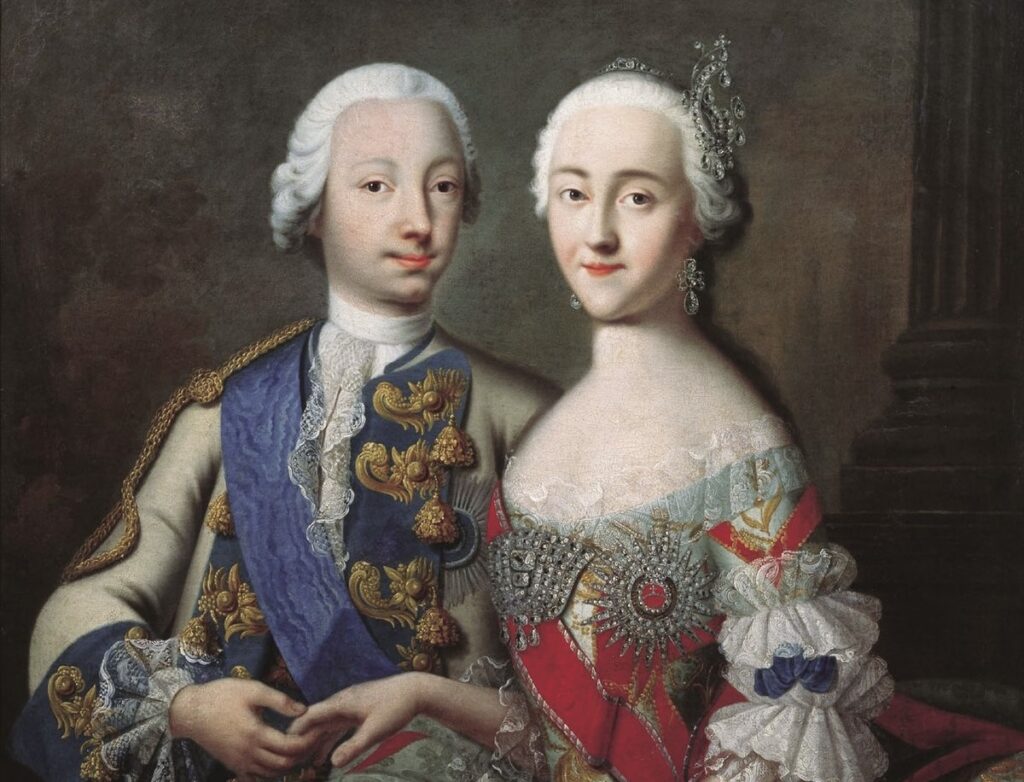
She left her residence at dawn and rode straight to the barracks of the Ismailovsky Regiment, which was one of the most loyal guard units. Catherine addressed the soldiers directly while wearing a simple riding outfit. She asked for their loyalty, and they swore allegiance to her on the spot.
From that point on, it was a whirlwind. She visited other guard regiments and made sure she secured their support. The Archbishop of Novgorod proclaimed her the sole ruler. Crowds gathered and watched Catherine, dressed in armor, take command like a born leader. By the evening of the same day, Peter had been arrested. The entire takeover was completed in under 24 hours.
The Man Who Lost a Crown Without a Fight
Peter did not resist much. In fact, he signed an official statement of abdication, which means he stepped down voluntarily. He was then sent to a country estate, a place that was heavily guarded.
In a society where women were expected to stand quietly beside their husbands, Catherine turned patience into a weapon.
Less than a week later, Peter died. Although officially it was said that he died of “hemorrhoidal colic,” historians suspect he was murdered, and it was possibly done by Catherine’s allies.
Catherine never publicly admitted to playing any role in his death, but the timing was just too convenient.
Catherine’s Genius in Slow Motion
Catherine’s coup succeeded because it was not something she had initiated overnight. She had spent years building her image as the intelligent and composed alternative to Peter’s erratic rule.
Catherine learned about Russian culture by learning to speak Russian fluently. She practiced Orthodox rituals more devoutly than some natives, charmed the right people, and military leaders, church officials, and nobles trusted her.
Catherine played the long game. She didn’t challenge Peter openly until the right moment. In a society where women were expected to stand quietly beside their husbands, Catherine turned patience into a weapon.
The Tears That Won People
After taking the throne, Catherine held a grand procession in St. Petersburg. Witnesses said she rode with a solemn expression and had tears in her eyes when she was thanking the people for their loyalty.
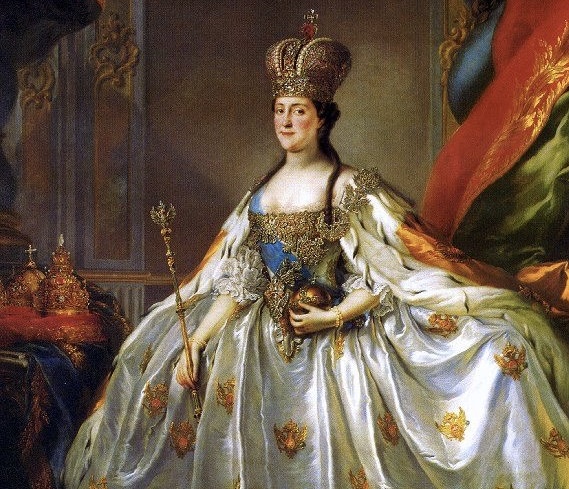
It was a masterclass in image-making. The message she passed was a clear one: “I didn’t want this power out of greed, I took it to save Russia.“
Whether the tears she shed were genuine or a form of political theater, they were effective. The people adored her.
Redefining Female Power in Russia
Catherine’s reign lasted 34 years, making her one of the longest-ruling women in history. She expanded Russia’s borders, modernized its administration, and became a patron of the arts and education. But the most revolutionary thing she did happened before any of that; it was the fact that she took the throne at all.
She turned the very forces that were meant to protect the tsar into her personal ladder to power.
During the 18th century in Europe, women in power were often seen as temporary placeholders for male heirs. Catherine blew up that idea. She ruled as Empress in her own right, not just as a regent for her son.
Catherine’s takeover became one of the most famous examples of a bloodless coup. She didn’t storm any palace with an army or wage a civil war. Instead, she turned the very forces that were meant to protect the tsar into her personal ladder to power.
Of course, there was betrayal; Peter lost his crown and, possibly, his life because of her. But to Catherine, it was all survival. In her memoirs, she later wrote: “My destiny drove me to it; my circumstances gave me no choice.“
History may debate her morals, but it can’t deny her skill.
Final Thoughts
We still discuss Catherine’s coup today because it upends the usual script of royal power. Here is a woman with no birthright to the Russian throne, stuck in a loveless marriage, and facing political exile — but she turned it all around with sharp thinking and perfect timing.
It is the ultimate reminder that power does not always belong to the one who “should” have it. Sometimes, it belongs to the one who knows how to take it.
And Catherine… She didn’t just take the throne. She kept it and made it great.
Now it’s your turn. If you were in Catherine’s shoes, stuck in a crumbling marriage and facing exile, would you have risked everything to take the throne? Or would you have walked away and started fresh somewhere else? Drop your thoughts below, and don’t forget to share with a friend who loves a good plot twist in history.


